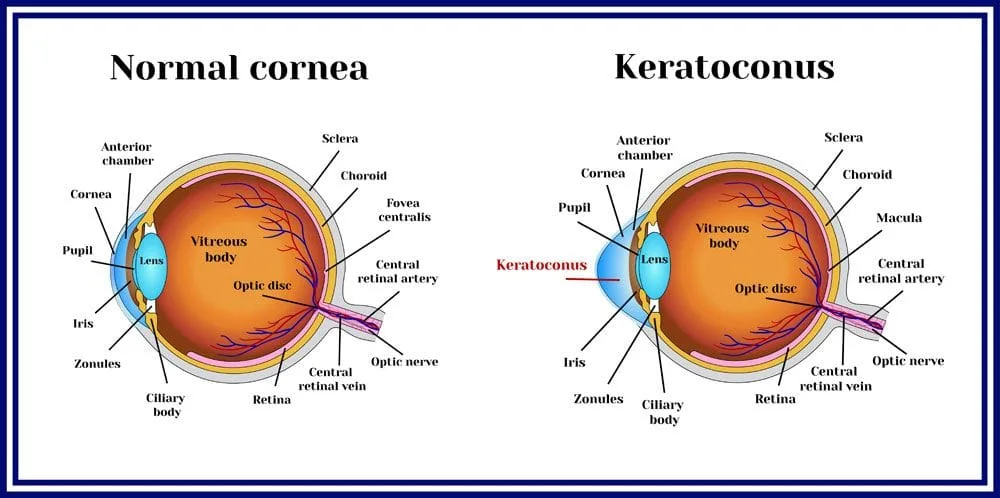The eyes might not stay the same shape for a person’s entire life. They go through changes that affect both the dimensions of the organ as well as how it functions. Oftentimes, those changes affect vision performance negatively. Keratoconus is one of those changes. If you need eye care from an optometrist on our optometry team, we at Arvada Optometric Center in Arvada, CO, are here to help.
The Nature of Keratoconus
Keratoconus varies and can progressively change over time. Mild cases may only need eyeglasses. The issue involves bowing outward or forward pressure on the cornea. When this occurs, it changes how the eye works and affects vision clarity.
Keratoconus Treatments
Aside from hard contact lenses and specialized eyeglasses, other optometrist treatments are available for keratoconus conditions, depending on the extent of development and how serious the case is. Unfortunately, keratoconus conditions can keep changing.
If we believe that you could benefit from surgery to help correct your condition, we can recommend you out to an eye surgeon so that you can get treatment. Although we do not have eye surrey as a part of our eye care services, we can provide a consultation so that you can see if you are a good candidate or not.
Regular Eye Exams Can Keep You Current on Your Prescription
Keratoconus can progress overtime and that progression could mean your prescription gets worse. Regular eye exams can help make sure that your prescription stays current so that you do not have any interruption in sight.
Eye exams can also help make sure that you do not have any eye diseases. Some eye disease can cause vision loss before you know to do anything about it. Eye exams can help detect these types of eye disease before you lose sight because of it. Visit an optometrist on our optometry team to help keep your eyes safe.
Get Keratoconus Treatments from a Keratoconus Eye Doctor on Our Optometry Team
If you’ve already been receiving keratoconus treatment or have just been diagnosed, we at Arvada Optometric Center can help with re-evaluating a current keratoconus condition as well as what options are specifically relevant going forward. Our approach as a keratoconus eye doctor in Arvada, CO, focuses on making sure our patients have a full understanding of all their options from an optometrist. If you need an optometrist’s help in this regard, call us today. We can address keratoconus concerns as well as monitoring development going forward. Call us at (303) 424-5282 for more information.

